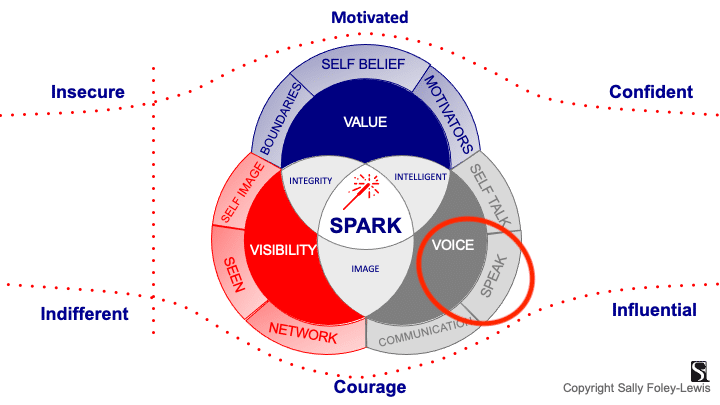Marketing genius Seth Godin posted a recent blog…
Contradictory answers to obvious questions
That’s how you know that they’re not obvious.
When smart, committed people disagree about the answer to a question, you’ve found a question worth pursuing and a discussion worth having.

I love this, and not just for what might be the most obvious reason. Thinking about the fact that there is disagreement, that there are differing, contradicting views, could actually help us keep calm and confident rather than get triggered into any fear of rejection, regret or failure.
When discussing an issue with smart and committed people – your people – reminding yourself that they are clever and invested could be the anchor you use to stop, breathe, and give yourself the opportunity to listen, be curious and hear all views. At least listen to as many differing views as time allows. This makes you a better informed leader: not just about the issue but also insight into your people.
An alternative way of looking at it, if they didn’t care, didn’t ‘argue’, it might appear peaceful but it’d be a red flag for engagement, productivity and presenteeism.
Using any trigger to help you keep calm during conflict, I believe is worth trying.
Conflict is an enormous topic with many nuances, e.g. speaking up with confidence when you disagree with:
- direct reports
- peers
- senior leaders
- clients/customers
- key stakeholders
Each cohort will present you with a different intensity of internal and external conflict based on the perceived power that’s present; the relationship you have with that person; the actual issue at hand; and your confidence in the issue, yourself and the relationship.

Speaking up is not always easy but the it’s important to consider the cost of not speaking up. In the novel Rodham, the author Curtis Sittenfeld blends real facts, anecdotes and analysis to portray a different path for Hilary Rodham Clinton. There’s a line in the book that resonates for this notion of speaking up:

“Sometimes speaking your mind is expensive, which doesn’t mean it’s not worth it.”
Three tips to fire up your confidence to speak up in conflict situations:
1. Autonomic Overrides
Our nervous system: a network with a mass of 2kg and accounts for 3% of our body weight. It works 24 hours a day, communicates at levels we barely understand, and is responsible for food to and waste removal from the brain. We do know that there is an endless balance between the Sympathetic Nervous System (SNS), “fight or flight”, and the Parasympathetic nervous system (PSNS), “relaxation response”. These two systems act equal and opposite to each other and regulate our breathing, heart rate, circulation, hormones and digestion. Unfortunately, these systems overreact to daily stress, aka conflict! Given time this condition creates an imbalance that leads to stress related problems such as slow muscular recovery, injuries and irritability. As it is hard to turn off the stress response, we can override it by turning on the relaxation response. The relaxation response is stimulated when the respiratory system is even, smooth and relaxed. [Source: Brian Dorfman: expert in kinesiology, anatomy, physiology and the biomechanics of movement]
Autonomic overrides are actions that can help start the PSNS, help stay calm focused and in control rather than dip into fears of failure, regret or rejection or even fight/flight.
a. Mindful breathing, stretching, and moving are a form of physical autonomic overrides.
b. Labelling is also helpful: calling the situation for what it is, putting a situation into context in a positive, helpful way. Take Seth’s quote for example, when a conflict in a meeting arises, label it: “This must be an important issue as we have contradictory responses. We have clever and committed people here.”
2. Leverage before Lunge
Before briefing the boss on a sensitive or contentious issue you know may trigger conflict, consider who you could speak with first. Who is a trusted advisor to the boss: their EA, an Office Manager, another head of department? Consult them so they may be able to advise you on what and how to present your information as well as support you.
3. Observe before Outspoken
Take a moment to reflect on the person you’re about to have the interaction with. The moment will give you time to ensure you’re calm and you can use the moment to consider how you can adapt your style to the person, especially in real time conversations based on their reactions. The more you observe others so you can understand how they engage with others the more confident you will be handling the tough conversations. Does the person ask questions, pushes back or drives hard, is an intensive listener, asks questions, has open or closed body language…
Bonus Tip
Conflict often arises due to value violations – people are late, people don’t listen, people interrupt, people keep making the same mistakes – which, if not dealt with can fester and significantly damage the culture of the team or whole organisation.
Without being a pollyanna you can help tame fears and spark confidence by turning the shadow into the light. In other words rephrasing a pet peeve into a positive. This can help you then approach the person with a more positive frame, confident and ready to resolve an issue. For example,
Pet peeve (Shadow): “I hate it when Mary is late.”
Positive Value (Light): “I really appreciate it when Mary arrives on time for our meetings.”

What is one of your pet peeves you can rephrase?




